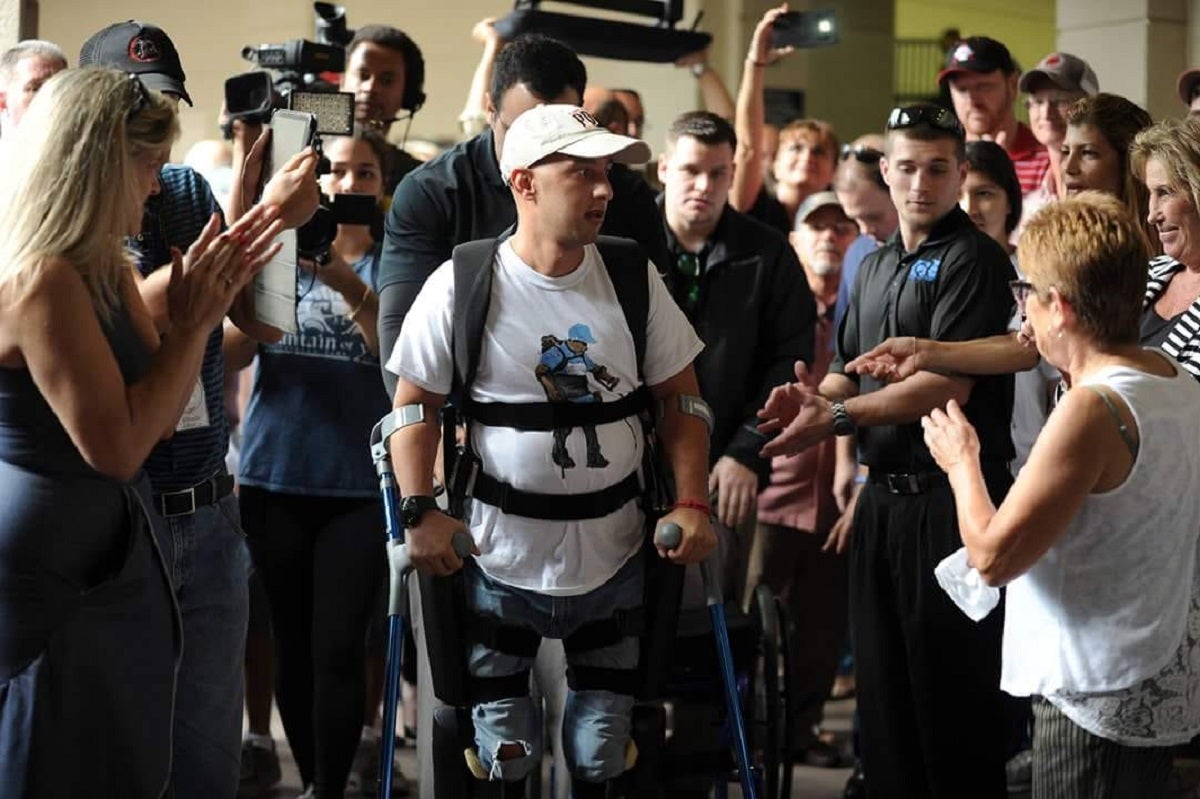A former jockey who was left paralyzed from the waist down after a horse riding accident was able to walk again thanks to a cutting-edge piece of robotic tech: a $100,000 ReWalk Personal exoskeleton.
When one of its small parts malfunctioned, however, the entire device stopped working. Desperate to gain his mobility back, he reached out to the manufacturer, Lifeward, for repairs. But it turned him away, claiming his exoskeleton was too old, *404 media *reports.
“After 371,091 steps my exoskeleton is being retired after 10 years of unbelievable physical therapy,” Michael Straight posted on Facebook earlier this month. “The reasons why it has stopped is a pathetic excuse for a bad company to try and make more money.”



This very much sucks.
On the other hand (and downvote me all you want… I didn’t even read the article) his attitude is off-putting. 10 years is pretty good and beyond most company’s warranties these days.
Respectfully requesting that in the future, you read articles before replying.
And:
This is all over a battery in a watch.
he’s not asking for a warranty claim or replacement, he’s asking for a repair service. it’s like taking your 10 year old accord to the service center to get some bushings/mounts/battery or whatever replaced
To get your…battery replaced, and they want to charge you for a new engine.
More like they want to charge you for a new car
I don’t think anyone should expect a battery replacement to be free after 10 years, but it shouldn’t cost $100,000
Right? It’s a frigging battery.
Surely we can get a group of battery techs and mechanical engineers together to come up with a solution.
Hell, I’ve been bastardizing the “wrong” batteries into devices since the mid-70’s, while today I’m usually replacing crappy built-in batteries with 18650’s. And I’m no EE, just have a little skill and vision.
Surely the battery spec on this is pretty clear, and it’s an off-the-shelf tech (not some odd chemistry devised by the company). Not that it really matters - a replacement merely needs to fit in the space, and match voltage and current requirements.
Here’s my guess. I don’t know anything about this particular device, but I have worked with medical devices.
A powered exo-skeleton sounds like it might be a class II medical device. Being a medical device, the OEM was required to produce a safety risk analysis per ISO 14971 in the EU and 21 CFR 820 in the US. I don’t know what all was listed, but probably one of the safety risks was thermal runaway from the (assumed) lithium ion batteries.
Lithium ion battery packs have a well known problem with occasionally overheating and catching fire. This famously delayed the launch of the 787 Dreamliner. This is also why you can’t put your phone or laptop battery into your checked luggage.
In the original risk analysis, there will be a number of mitigation steps identified for each hazard. For the lithium thermal runway, these probably include a mix of temperature monitoring, overheat shutdown, and passive design features in the battery pack itself to try to keep the impacts of over temperature and fire away from the patient.
So how does the price get to 100k? It could be some kind of unique design features that are now out of production and the original tooling is not available. The 100k cost is probably something like to redesign the production tooling, particularly if you have to remake injection molds.
You can’t just use any off the shelf battery pack, because that would invalidate the risk analysis. You’d need to redo the risk analysis, repeat at least some amount of validation testing, and possibly resubmit an application to the FDA.
TLDR: you can get some MEs and EEs together to solve this problem, but once they’re on the case, you can blow through 100k real fast.
Rebuilding the original pack with new cells is semi-common practice, no need for new tooling
Oh
Yeah, that’s something any jackass with a soldering iron could fix in about 10 seconds
lol lol
You: he was about to move around for a few years and should be happy with that and accept his paralyzed state
That’s true for consumer electronics. However, more expensive things like cars are usually kept running for much longer.
Cars are probably covered differently by law, like minimum years producer has to offer replacement parts and such. Probably all boils down to the contract for that exoskeleton. Definitely not an excuse for that petty company trying to suck tens of thousands of dollars instead of a simple repair.